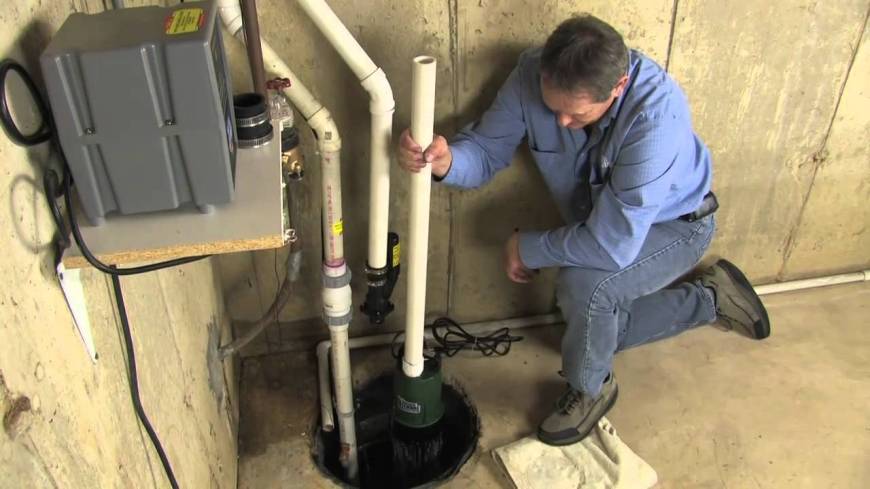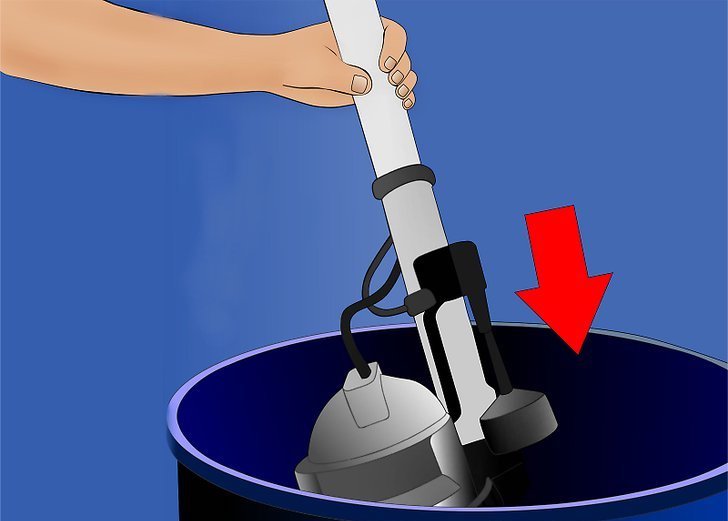Our Guide to Carefully Caring for a Sump Pump
Our Guide to Carefully Caring for a Sump Pump
Blog Article
This article further down relating to Cleaning & Maintenance Tips for Your Home's Sump Pump is relatively captivating. Don't skip it.

Sump pumps are critical parts in lots of homes, specifically in areas vulnerable to flooding or too much wetness. They help avoid water damage by effectively getting rid of excess water from basements or crawl spaces. However, like any other appliance, sump pumps require routine upkeep to guarantee they work properly when needed the most. Cleaning your sump pump is an essential part of its upkeep, and understanding exactly how to do it appropriately can conserve you from costly repair services and possible catastrophes.
Intro
Keeping a tidy sump pump is vital for its appropriate performance and durability. Ignoring this crucial job can result in obstructions, malfunctions, and ultimately, water damage to your residential or commercial property. Consequently, finding out how to clean up a sump pump is crucial for property owners who rely on these tools to maintain their cellars dry and secured.
Recognizing the Sump Pump
Before diving into the cleansing process, it's important to have a basic understanding of how a sump pump works. Typically set up in a pit or container listed below the basement floor, a sump pump consists of a number of essential parts, consisting of a pump, a float switch, and a discharge pipeline. When water gathers in the pit, the float button turns on the pump, which then pumps the water out via the discharge pipe, far from the building's structure.
Indicators of a Dirty Sump Pump
Knowing when your sump pump needs cleansing is vital for preventing possible breakdowns. Some usual signs that suggest a dirty sump pump include strange sounds during operation, minimized water circulation, and visible debris in the pit. If you notice any one of these signs, it's essential to cleanse your sump pump immediately to prevent any kind of more concerns.
Planning for Cleaning
Before you start cleansing your sump pump, it's vital to take some safety precautions. Beginning by turning off the power to the pump to avoid any kind of electric crashes. In addition, use ideal safety gear, such as handwear covers and goggles, to secure on your own from dust, debris, and prospective virus.
Detailed Guide to Cleaning a Sump Pump
Shutting Off the Power
Begin by detaching the power supply to the sump pump to avoid any mishaps while cleaning.
Eliminating Particles and Dust
Make use of a bucket or an inside story to get rid of any kind of noticeable particles, dirt, or sediment from the sump pit. Dispose of the particles properly to avoid it from clogging the pump or the discharge pipe.
Cleaning the Pump and Float Change
When the pit is free from particles, meticulously remove the pump from the pit. Check the pump and the float button for any type of indicators of damages or wear. Make use of a soft brush or fabric to cleanse the surfaces and get rid of any kind of built up crud.
Purging the System
After cleaning the pump and float button, flush the sump pit with clean water to get rid of any kind of continuing to be dirt or sediment. This will aid make certain that the pump operates smoothly and efficiently.
Checking for Appropriate Performance
Before reinstalling the pump, execute a quick examination to make sure that the float switch turns on the pump properly. Put some water into the sump pit and observe the pump's procedure. If every little thing is functioning properly, you can reconstruct the pump and reconnect the power supply.
Maintenance Tips to Keep Your Sump Pump Clean
In addition to regular cleaning, there are numerous upkeep suggestions you can comply with to keep your sump pump in optimum problem:
Conclusion
Cleansing your sump pump is a critical facet of its maintenance and guarantees that it runs efficiently when you need it one of the most. By following the steps described in this guide and integrating regular maintenance into your regimen, you can extend the life expectancy of your sump pump and protect your home from water damages.
6 STEPS ON HOW TO CLEAN A SUMP PUMP PROPERLY
UNDERSTANDING SUMP PUMPS
Your sump pump plays a crucial role in protecting your home by managing and removing excess water. It primarily functions as a “shield”, guarding your basement against the damaging effects of water accumulation. The pump is housed in a sump pit in the lowest part of your basement, and its job is to pump out any water that collects there.
During heavy rainfalls or when snow melts rapidly, water can infiltrate your basement, posing potential risks like flooding, structural damage, and harmful mold growth. Here, the sump pump springs into action, pumping out the intruding water and directing it away from your home.
SAFETY FIRST
Before cleaning, remember to prioritize safety. Disconnect the sump pump from the power source to prevent any accidental electric shocks. Also, wear sturdy gloves to protect your hands from any sharp or dirty components within the pump.
REMOVE THE SUMP PUMP
After ensuring your safety, the next step is to remove the sump pump from its pit. Doing this might require careful maneuvering as you don’t want to damage any pump components. Once removed, clean the sump pit to remove any accumulated debris or sludge.
INSPECT THE PUMP
Inspect the pump for any visible signs of wear or damage. Check the power cord, float switch, and impeller housing. If any components look worn out or damaged, consider replacing them to ensure optimal performance.
CLEAN THE PUMP
Thoroughly clean the pump with warm, soapy water. Make sure to rid it of any dirt, gravel, or other debris that might impede its performance. You can use a toothbrush to clean the small, hard-to-reach parts of the pump.
REINSTALL THE SUMP PUMP
Reinstall the pump into the sump pit Make sure it’s positioned correctly to remove the water effectively Once it’s back in place, reconnect it to the power source TEST THE PUMP
Finally, pour some water into the pit to ensure the pump works correctly. It should start automatically and begin pumping out the water; if it doesn’t, check the power source and the positioning of the pump.
Remember, while cleaning your sump pump is an essential part of home maintenance, hiring a professional plumber for a thorough inspection and cleaning at least once a year is also important. This will ensure that your pump is in optimal condition, ready to protect your home from potential water damage.
BEST PRACTICES FOR CLEANING SUMP PUMP DISCHARGE PIPES
Regular Inspection: Regularly inspect your discharge pipes, especially during heavy rainfall or snowmelt periods. Look for any signs of blockage or damage. Early detection of problems can prevent serious issues down the line. Periodic Cleaning: Over time, sediment and debris can accumulate in the discharge pipes, impeding the flow of water. Regular cleaning helps keep the pipes clear and functioning efficiently. You can use a high-pressure water jet to effectively clean the pipes. Insulation During Winter: In colder climates, discharge pipes can freeze, blocking the outflow of water. Protect your discharge pipes from freezing temperatures by insulating them with foam pipe insulation. This will ensure the sump pump can continue to discharge water even in freezing conditions. Proper Positioning: The discharge pipe should be positioned to direct water away from your home’s foundation. Improper positioning can lead to water seeping back into the basement. Ensure the pipe is long enough and angled correctly. Installation of a Check Valve: A check valve prevents water from flowing back into your sump pit after the pump has pushed it out. Installing a check valve helps maintain the efficiency of your sump pump and reduces the risk of flooding. Minimize Pipe Turns: Every curve or turn in the discharge pipe can decrease the efficiency of water flow. By minimizing turns and bends in your discharge pipe, you can increase the efficiency of your sump pump. https://www.fullspeedplumbing.com/how-to-clean-a-sump-pump-properly9999/

As an enthusiastic person who reads about How To Effectively Clean A Sump Pump, I imagined sharing that portion was sensible. Loved our post? Please share it. Help someone else find it. Kudos for being here. Don't forget to pay a visit to our blog back soon.
Call Us Today Report this page